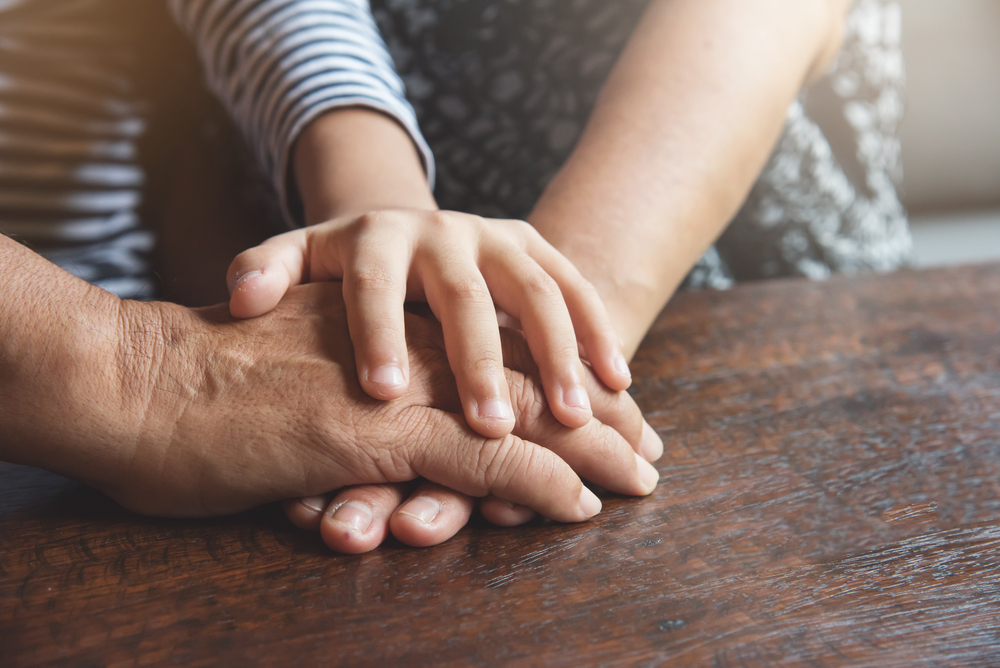
Family Youth Institute Suicide Kit: A Resource for the Muslim Community
By: Mariam Kandil
“Cultural shame leads people to feel isolated. There is no shame in seeking help.”
Since the publication of The Family and Youth Institute (FYI) Suicide Prevention and Intervention Resources in September of 2017, over 6000 people have accessed the Suicide Prevention and Intervention Resources on the website and almost 25,000 have accessed them through social media outreach. Mosques and community centers are starting to address suicide and mental health issues in programming and Friday sermons. As Sheikh Yaser Birjas mentioned in a Friday sermon this past September, “We live in one society, we are not immune. Cultural shame leads people to feel isolated. There is no shame in seeking help. It is obligatory if you need help or know someone who does that you should seek it [professional help] (1).”
Many different micro-communities are impacted by suicide – children, adults, and school-systems. According to the US Department of Health and Human Services, “Following exposure to suicide or suicidal behaviors within one’s family or peer group, suicide risk can be minimized by having family members, friends, peers, and colleagues of the victim evaluated by a mental health professional. Persons deemed at risk for suicide should then be referred for additional mental health services (2).” Being aware of the risk factors related to suicide is important to help individuals before it’s too late. As Allah (SWT) reminds us “Whoever saves one life, it is written as if they have saved all of humanity (5:32).”
Suicide risk factors include:
- Prior suicide attempts; those who have a history of trying to end their life are more likely to attempt suicide again
- Exposure to suicidal behavior, whether through family, friends, celebrities, movies, or television shows (3)
- The existence of mental illness such as depression, bipolar disorder, borderline personality disorder, schizophrenia and substance abuse (4)
- The presence of chronic pain or physical illness, which may cause feelings of depression, anxiety, and hopelessness
- The past or present experience of abuse and/or violence
- The existence of long-term or recent stressors such as relationship issues, financial struggles, legal problems, discrimination or harassment (5)
- Exhibiting impulsive or aggressive behavior, which may indicate a diminished ability to think through the consequences of one’s actions (6)
- Access to lethal materials
- Intoxication or withdrawal from substance abuse
- Social isolation, low self esteem, difficulty developing and maintaining close, satisfying, and stable relationships (7)
“In Muslim communities, the religious and cultural conversation around suicide is often presented in black and white terms (eg, all suicide is a sin worthy of punishment), in stark contrast to the sophisticated understanding of the human condition that we see in Quran and Hadith.”
Knowledge of risk factors may help identify people who are at greater risk of attempting suicide. Greater understanding enables one to intervene and refer an individual to a mental health professional. Countless Muslims struggle everyday with suicidal thoughts and it is important that the community is proactive and supportive of people at risk for suicide or those who have attempted it. Sh. Yaser Birjas reminds us “It is our duty not to condemn (the people struggling), our duty is to try our best to save these individuals before it happens (1).” Mental health stigma in the Muslim community is real and often prevents people from getting the help they need. In Muslim communities, the religious and cultural conversation around suicide is often presented in black and white terms (eg, all suicide is a sin worthy of punishment), in stark contrast to the sophisticated understanding of the human condition that we see in Quran and hadith. What we need is a conversation that takes into account the actual complexity of this discussion in our religious texts, a discussion that reflects the complexity of human beings and the realities of mental pathology.
By addressing suicide directly, we are helping to create constructive conversations around critical issues. The FYI Community Action Guide highlights healthy ways to address this in our community. Some programming ideas include Friday sermons that address mental health in general and suicide in particular. Downloading and distributing the FYI Suicide Prevention and Intervention Infographics is another helpful idea. Collecting and sharing a list of local mental health providers that are culturally and religiously competent is also important. Giving regular public service announcements and offering community workshops that address coping tools, even including spiritual ones such as prayer for those interested, can be invaluable.
“When people do struggle in the moment, we must reach out to them to give them comfort. And when people lose their sense of hope for the future, we must engage with them to restore that hope”
As the effects of suicide on American Muslim communities are felt, Paul Gionfriddo from Mental Health America reminds us, “If we’re paying attention from the start, we have time to prevent many suicides from happening. But we must intervene early. We can’t always wait for the medical diagnoses to catch up with people’s lived experiences. When people are exposed to trauma, we must stop ignoring them or even bullying them. When people are exposed to unsafe living conditions, violence, abuse, and neglect, we must change these conditions. When people do struggle in the moment, we must reach out to them to give them comfort. And when people lose their sense of hope for the future, we must engage with them to restore that hope (8).”
If you or a friend needs help, call the National Suicide Prevention Lifeline at 1-800-273-8255.
References:
Birjas, Yaser. (2018). Suicide and Mental Health in the Muslim Community. The Valley Ranch Islamic Center. Irving, TX.
What does ‘suicide contagion’ mean, and what can be done to prevent it?. (2014). Washington, DC: U.S. Department of Health and Human Services. Retrieved from: https://www.hhs.gov/answers/mental-health-and-substance-abuse/what-does-suicide-contagion-mean/index.html
Nimh.nih.gov. (2017). Suicide Prevention. Retrieved from: https://www.nimh.nih.gov/health/topics/suicide-prevention/index.shtml
Rodgers, P. (2011). Understanding the risk and protective factors for suicide: a primer for preventing suicide. Education Development Center Inc., Newton, MA.
Ineichen, B. (2008). Suicide and attempted suicide among South Asians in England: who is at risk?. Mental health in family medicine. 5(3), 135.
Gvion, Y. & Apter, A. (2012) Suicide and Suicidal behavior. Public health reviews. 34 (2), 9.
Trout, D.L. (1980). The role of social isolation in suicide. Suicide and Life-threatening Behavior, 10(1), 10-23.
Gionfriddo, Paul. In The Face of Yet Another Tragic Loss, We Must Act. (2018). Alexandria, VA: Mental Health America. Retrieved from: http://www.mentalhealthamerica.net/face-yet-another-tragic-loss-we-must-act
About the Author:
 Mariam Kandil is a Behavioral Health Specialist with The Family and Youth Institute. Mariam earned her Bachelors of Science in Brain and Cognitive Sciences from the Massachusetts Institute of Technology and completed her Masters of Arts in Counseling Psychology from Santa Clara University. Her past clinical experience include serving as a youth counselor at Adolescent Counseling Services and Safe Alternatives to Violent Environments, addressing Health Disparities and Cultural Competence needs at San Mateo County’s Behavioral Health Department, and involvement with research teams at Harvard, MIT, and Johns Hopkins University. Her area of interests include: mental health disparities, health promotion, and culturally competent counseling; as well as suicide prevention, youth counseling, marriage and family therapy. Mariam has been using her skills to help empower the community for more than a decade.
Mariam Kandil is a Behavioral Health Specialist with The Family and Youth Institute. Mariam earned her Bachelors of Science in Brain and Cognitive Sciences from the Massachusetts Institute of Technology and completed her Masters of Arts in Counseling Psychology from Santa Clara University. Her past clinical experience include serving as a youth counselor at Adolescent Counseling Services and Safe Alternatives to Violent Environments, addressing Health Disparities and Cultural Competence needs at San Mateo County’s Behavioral Health Department, and involvement with research teams at Harvard, MIT, and Johns Hopkins University. Her area of interests include: mental health disparities, health promotion, and culturally competent counseling; as well as suicide prevention, youth counseling, marriage and family therapy. Mariam has been using her skills to help empower the community for more than a decade.
